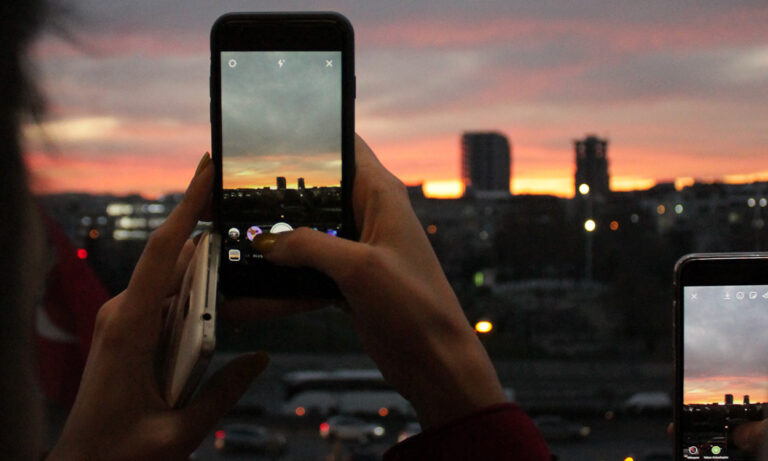Why are random suspicious-looking accounts watching my Instagram Story? An online investigation
Picture this: You’ve just uploaded a cute selfie to your Instagram Story, left your phone alone for about ten minutes only to preemptively decide to pick it back up to check who’s seen or reacted to your latest post. Here, among the likes of your friends, exes and loosely related family members are a bunch of people you could swear you’ve never seen—or digitally interacted with—in your life.
“@caroline17jonerzp, @oldadur.awearelib7107, @ella.miller362peb and @vanessadowd698dpu liked your Story.” Wondering who they could be, you click on all four of these mystery admirers and discover that none of them has any followers. Worse, they don’t have any posts either.
If you’re young enough to be a somewhat new adopter of Instagram, then let me clarify one thing: these accounts are what some would call ‘spam’, ‘bot’ or ‘fake’ accounts. And just like I’ve recently witnessed on the app, if you post stories on a daily basis, they will pop up in your notifications every single time.
So what’s the deal with this and why are random, spammy-looking accounts obsessively watching your Instagram Story? I looked into it to bring you the top three theories dominating the internet.
1. Someone you know wants to watch your Stories without you knowing
Let’s be honest, we’ve all been there. Let’s say you fell out with your bestie for whatever reason and noticed they had shared something on their Instagram Story. You’re curious, of course, and need to see what it is, but at the same time, you don’t want to give them the satisfaction of knowing that you’re still keeping up with their doings—you’ve got too much pride for that.
So you’re in a bit of a pickle, a catch-22 if you will. To openly watch or not to watch their Story? Well, according to what some Instagram experts have been saying online, you don’t have to pick. According to Hydrogen—the largest specialist social media agency in Scotland—the last couple of years saw a rise in tools which allow you to secretly view (and even download) people’s Stories without being logged in.
“A staple for ‘social media stalkers’, these sites ask you to put in the handle of the person whose Story you want to view, and allow you to see all Stories of that person… without being logged in. It then appears as if it’s been viewed by a bot account,” the agency explained.
2. Random mass viewing of Instagram Stories is the new buying followers
Hydrogen, along with numerous other social media experts, also went on to claim that this influx in bot profiles watching randomers’ Stories might be linked to a bigger trend on the platform. According to their second theory, in a move to counter Instagram’s crackdown on bots and paid-for followers, small social media agencies are interacting with strangers’ Stories to make them seem less dodgy.
In their minds, if you see an account as having seen your Story, and if that individual’s profile seems similar to yours or shares a common interest—be it fashion, animals or fitness—then you’ll be more likely to follow them. This interaction will in turn indicate to Instagram that the bot account is actually legit, which it isn’t.
That’s the theory, anyway. In reality, you probably wouldn’t follow anyone with zero posts and zero followers. We’ve all watched far too many Netflix true crime documentaries to fall for that trick.
This hypothesis would also explain why you’re seeing random accounts voting on your Instagram Story polls. Certain apps—which I won’t be naming here for obvious reasons—promise potential customers that their “account will automatically interact and vote on thousands of stories per day (including polls and quizzes). It can result in up to 5,000 active followers per month!”
5,000 followers per month, right…
3. They’re Russian spies
I kept the best speculation for last because I’m nice like that. Among the strange-looking accounts that have started interacting with your Stories, you might have noticed that most of them have their usernames in Cyrillic text—a writing system used for various languages across Eurasia.
As of 2019, around 250 million people in Eurasia use Cyrillic as the official script for their national languages, with Russia accounting for about half of them. TechCrunch’s very own director of events, Leslie Hitchcock, flagged the issue, complaining of “eerie” views on her Instagram Stories from random Russian accounts. Some seemed like genuine accounts (such as artists with several thousand followers) while others were simply “weird” looking.
However, that was back in 2019, and Instagram has since stated that it was aware of the issue, which eventually led it to its aforementioned crackdown on fake accounts. In other words, don’t believe the rumours circulating on Reddit that claim these Russian-looking profiles are spies sent by President Vladimir Putin. They’re just part of the new growth hacking tactic highlighted in point two.
How are bots finding my Instagram Story?
It goes without saying that if your Instagram profile is public, anyone can find your Story. Specific services offer users the option of searching for Stories using hashtags, geo-tags, and even people who follow a specific account.
There are even options to target users based on how many followers they have. The more you know, right?






